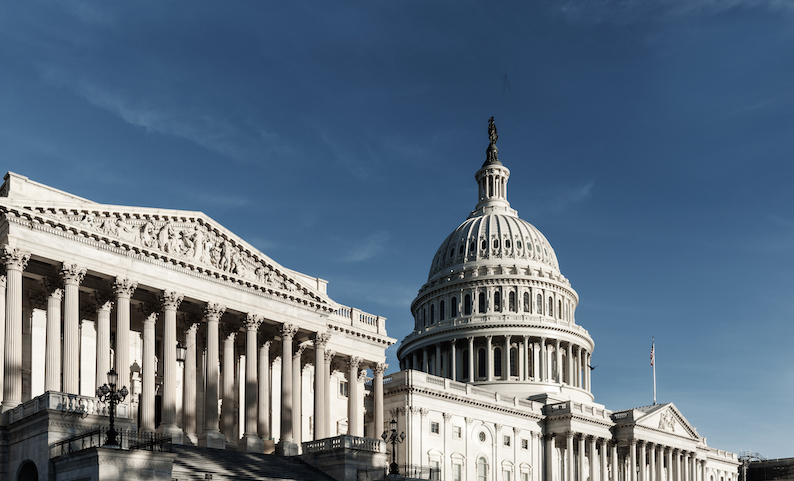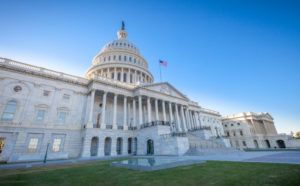
The Congressional Review Act restores notions of separation of powers and empowers private parties affected by regulation.
Last year, The Regulatory Review published an essay by Keith Bradley and Larisa Vaysman arguing that a decision by the U.S. Congress and the President to nullify an agency rule under the Congressional Review Act (CRA)—such as the auto lending rule adopted by the Consumer Financial Protection Bureau in 2017—has little, if any, legal effect whenever the agency’s rule is a guidance document, or an “interpretative rule,” rather than an old-fashioned regulation, or a “legislative rule.”
The reason, they say, is that resolutions nullifying guidance documents “will be ineffectual”—even “an empty gesture”—because guidance documents do not have “legal consequence of their own.” But I believe that Bradley and Vaysman underestimate the legal and practical effect of agency guidance documents, as well as the effect of Congress’s decision to nullify one.
The U.S. Supreme Court has made it clear that an agency’s interpretative rules can receive much the same “force and effect of law” that legislative rules enjoy. In 1945, the Court held in Bowles v. Seminole Rock & Sand Co. that the courts must treat an agency’s reading of its own sub-statutory rules as conclusive unless that interpretation is inconsistent with the text of the rule itself. The Court reaffirmed that proposition more than 50 years later in Auer v. Robbins.
The evidence shows that an agency’s memoranda have played an important role in any litigation over an agency’s compliance with the law. One scholar has estimated that a federal agency won more than 90 percent of the cases in which Seminole Rock played a deciding role. Other commentators have found different success rates, but the government still seemed to win much more than half of the cases in which a court must decide whether an agency has correctly read one of its rules. That is far from, as Bradley and Vaysman describe it, a “light thumb on the scale in the decision” as to what the law is.
The Supreme Court revisited Seminole Rock and Auer this past term in Kisor v. Wilkie and declined to overturn those decisions. Instead, the Court transformed them into another version of Chevron deference. It remains to be seen how the lower federal courts will apply the new Kisor standard. Whatever the success rate might be, however, Kisor, like Chevron, gives the government a benefit that no private party ever has: the ability to have its interpretation of an agency rule serve, at a minimum, as the tie-breaker when a court must decide a case. Accordingly, as long as an agency receives any amount or kind of deference when it construes one if its rules, those rules will have “legal consequence of their own”—even if they are interpretive rules or guidance.
Consider also the practical consequences that agency guidance can have. Publicly traded companies face the problem of potentially seeing their stock prices decline once a federal agency makes public its “concern” with the companies’ practices by issuing a guidance document. With the Congressional Review Act, Congress wanted to be able to prevent an unwise rule from causing severe harm before it goes into effect.
Another reason why Congress wanted to be able to invalidate rules before they take effect was to spare private parties the burden of doing so. Litigation is costly to private parties. If it is too expensive to litigate a claim in which a guidance document plays a pivotal role, a private party might have to live with that agency rule.
In addition, nullifying an interpretive rule is hardly an “ineffectual” action, despite Bradley and Vaysman’s contention.
Consider also the effect on the underlying statute of a congressionally passed and presidentially signed joint disapproval resolution. The Supreme Court’s INS v. Chadha decision requires that, for a joint disapproval resolution to become a “Law” under Article I, both Houses of Congress must pass the identical bill, and the President must sign it (or Congress override his veto). Once the President signs it, the rule becomes void. Nevertheless, it is important to understand how that happens: namely, a CRA disapproval resolution has the effect of amending the underlying statute on which the agency relied to adopt its rule.
Congressional and presidential disapproval of an agency rule bars the agency from readopting it “unless the reissued or new rule is specifically authorized by a law enacted after the date of the joint resolution disapproving the original rule.” That is, an agency can re-promulgate a disapproved rule only if Congress enacts a new statute after the date that a disapproval resolution becomes law, because passage of the disapproval resolution has the effect of modifying the underlying statute.
The Supreme Court has made clear that “an agency literally has no power to act . . . unless and until Congress confers power upon it,” so an agency cannot change its mind or offer new evidence to support a reissued rule. The agency must be able to point to new statutory authority to do so. That is why, as Bradley and Vaysman note, some commentators have described a disapproval resolution that becomes law as having the effect of “salting the earth.” It does, until a new statute comes along. Whatever rule Congress and the President nullify—whether a legislative or an interpretive rule—cannot come back to life until Congress and the President put a new Article I “Law” into effect.
Bradley and Vaysman are right to say that the most important purpose and effect of the CRA was to enable Congress to halt the implementation of unlawful or unwise legislative rules before they could cause serious harm. But interpretive rules have consequences, and so does a presidentially signed CRA joint disapproval resolution. A decision by Congress and the President to reject an agency’s interpretation of a law is hardly the type of “empty gesture” that Bradley and Vaysman describe.




